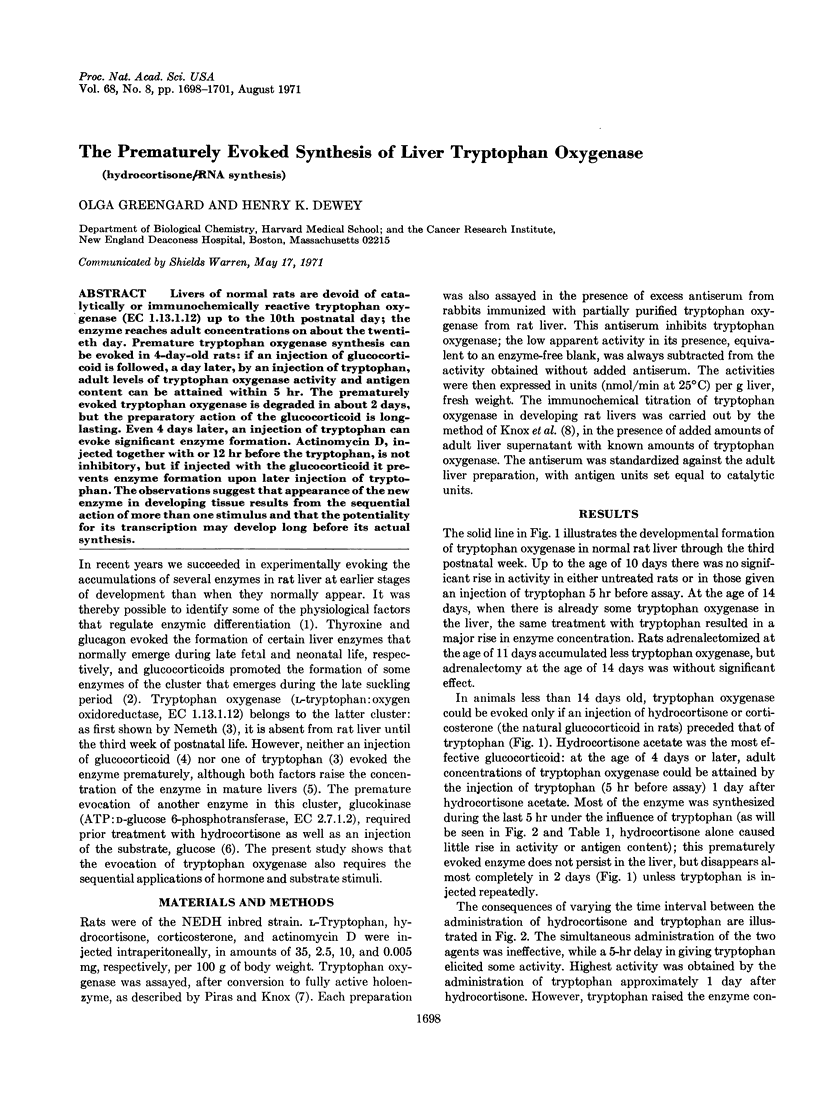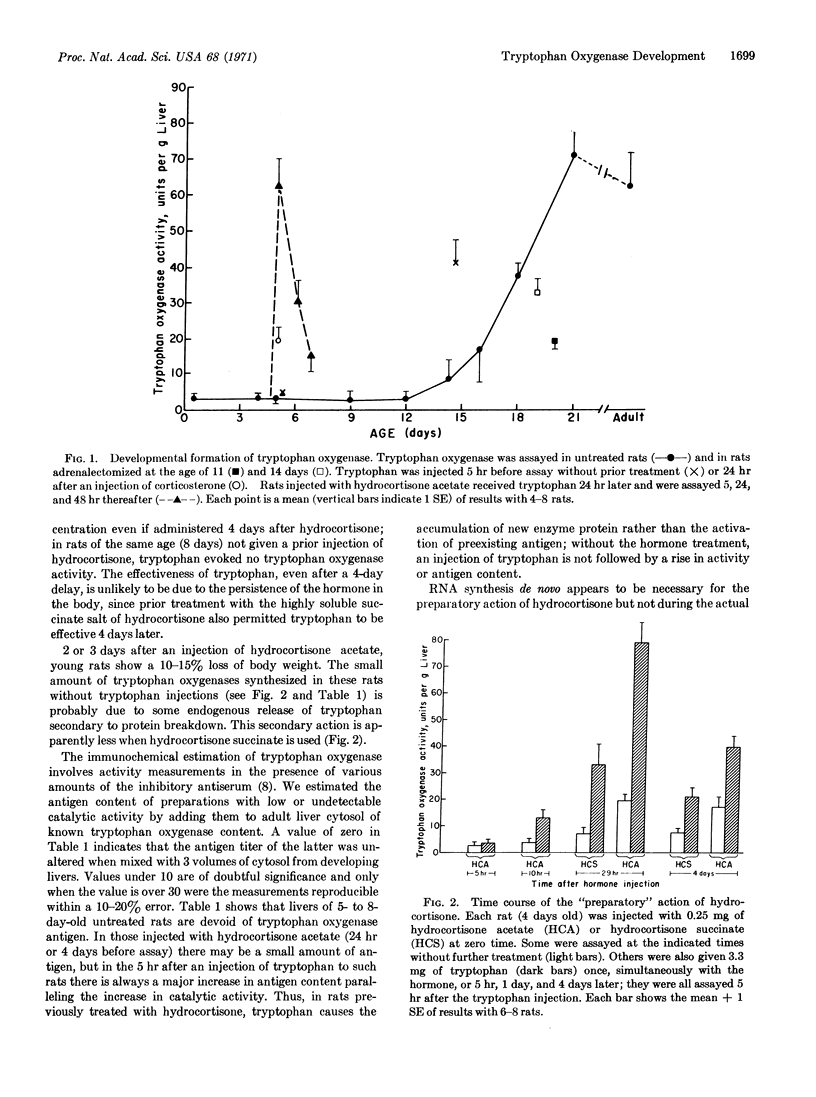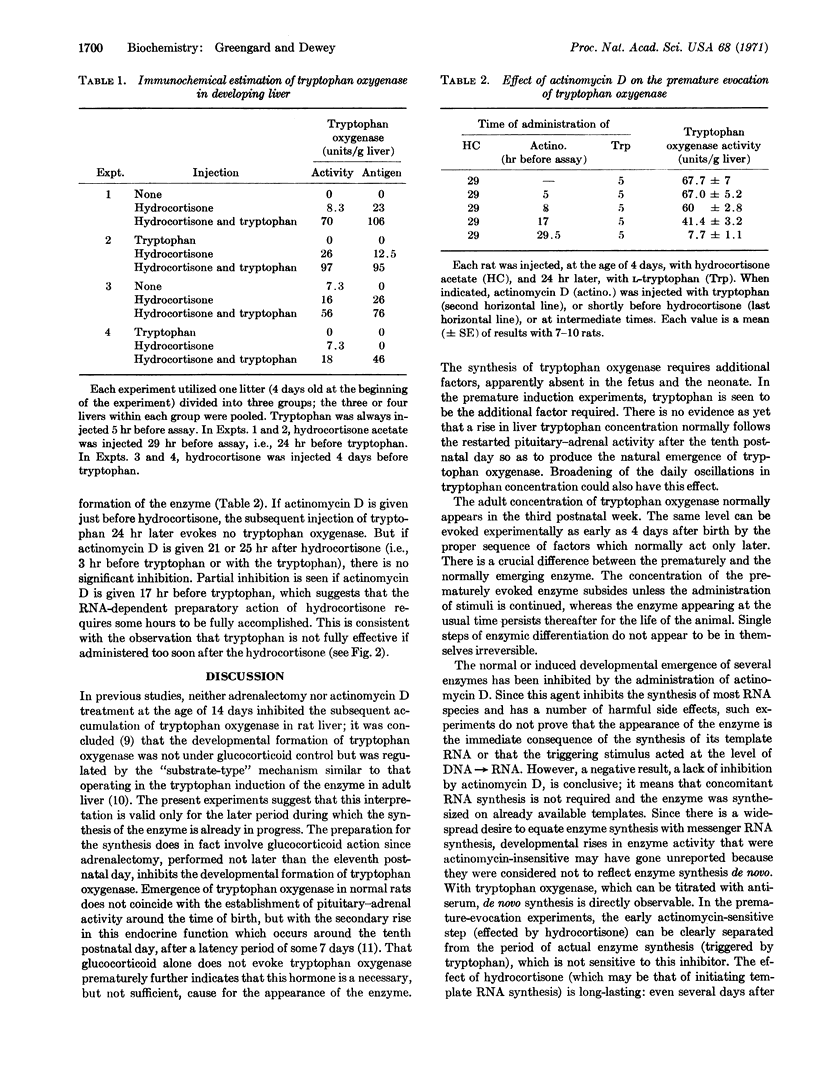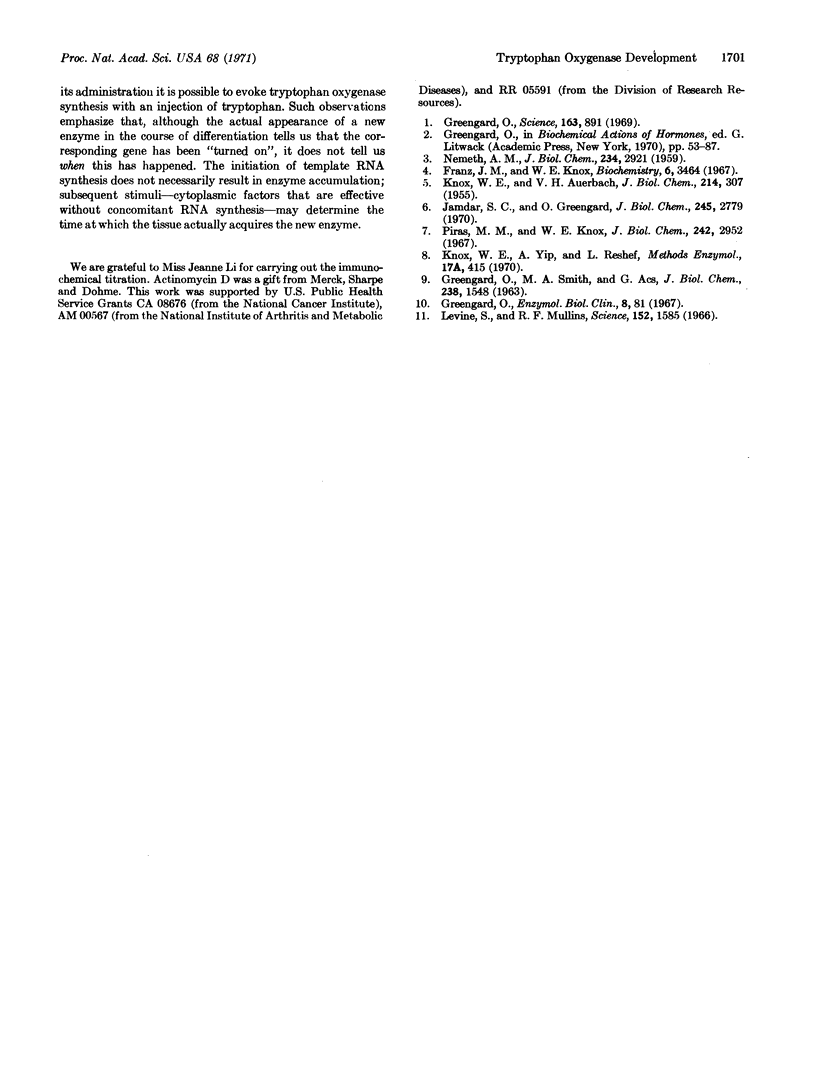Abstract
Livers of normal rats are devoid of catalytically or immunochemically reactive tryptophan oxygenase (EC 1.13.1.12) up to the 10th postnatal day; the enzyme reaches adult concentrations on about the twentieth day. Premature tryptophan oxygenase synthesis can be evoked in 4-day-old rats: if an injection of glucocorticoid is followed, a day later, by an injection of tryptophan, adult levels of tryptophan oxygenase activity and antigen content can be attained within 5 hr. The prematurely evoked tryptophan oxygenase is degraded in about 2 days, but the preparatory action of the glucocorticoid is longlasting. Even 4 days later, an injection of tryptophan can evoke significant enzyme formation. Actinomycin D, injected together with or 12 hr before the tryptophan, is not inhibitory, but if injected with the glucocorticoid it prevents enzyme formation upon later injection of tryptophan. The observations suggest that appearance of the new enzyme in developing tissue results from the sequential action of more than one stimulus and that the potentiality for its transcription may develop long before its actual synthesis.
Keywords: hydrocortisone, RNA synthesis
Full text
PDF



Selected References
These references are in PubMed. This may not be the complete list of references from this article.
- Franz J. M., Knox W. E. The effect of development and hydrocortisone on tryptophan oxygenase, formamidase, and tyrosine aminotransferase in the livers of young rats. Biochemistry. 1967 Nov;6(11):3464–3471. doi: 10.1021/bi00863a017. [DOI] [PubMed] [Google Scholar]
- GREENGARD O., SMITH M. A., ACS G. Relation of cortisone and synthesis of ribonucleic acid to induced and developmental enzyme formation. J Biol Chem. 1963 Apr;238:1548–1551. [PubMed] [Google Scholar]
- Greengard O. Enzymic differentiation in mammalian liver injection of fetal rats with hormones causes the premature formation of liver enzymes. Science. 1969 Feb 28;163(3870):891–895. doi: 10.1126/science.163.3870.891. [DOI] [PubMed] [Google Scholar]
- Greengard O. The quantitative regulation of specific proteins in animal tissues; words and facts. Enzymol Biol Clin (Basel) 1967;8(2):81–96. doi: 10.1159/000458182. [DOI] [PubMed] [Google Scholar]
- Jamdar S. C., Greengard O. Premature formation of glucokinase in developing rat liver. J Biol Chem. 1970 Jun 10;245(11):2779–2783. [PubMed] [Google Scholar]
- KNOX W. E., AUERBACH V. H. The hormonal control of tryptophan peroxidase in the rat. J Biol Chem. 1955 May;214(1):307–313. [PubMed] [Google Scholar]
- Levine S., Mullins R. F., Jr Hormonal influences on brain organization in infant rats. Science. 1966 Jun 17;152(3729):1585–1592. doi: 10.1126/science.152.3729.1585. [DOI] [PubMed] [Google Scholar]
- NEMETH A. M. Mechanisms controlling changes in tryptophan peroxidase activity in developing mammalian liver. J Biol Chem. 1959 Nov;234:2921–2924. [PubMed] [Google Scholar]
- Piras M. M., Knox W. E. Tryptophan pyrrolase of liver. II. The activating reactions in crude preparations from rat liver. J Biol Chem. 1967 Jun 25;242(12):2952–2958. [PubMed] [Google Scholar]


